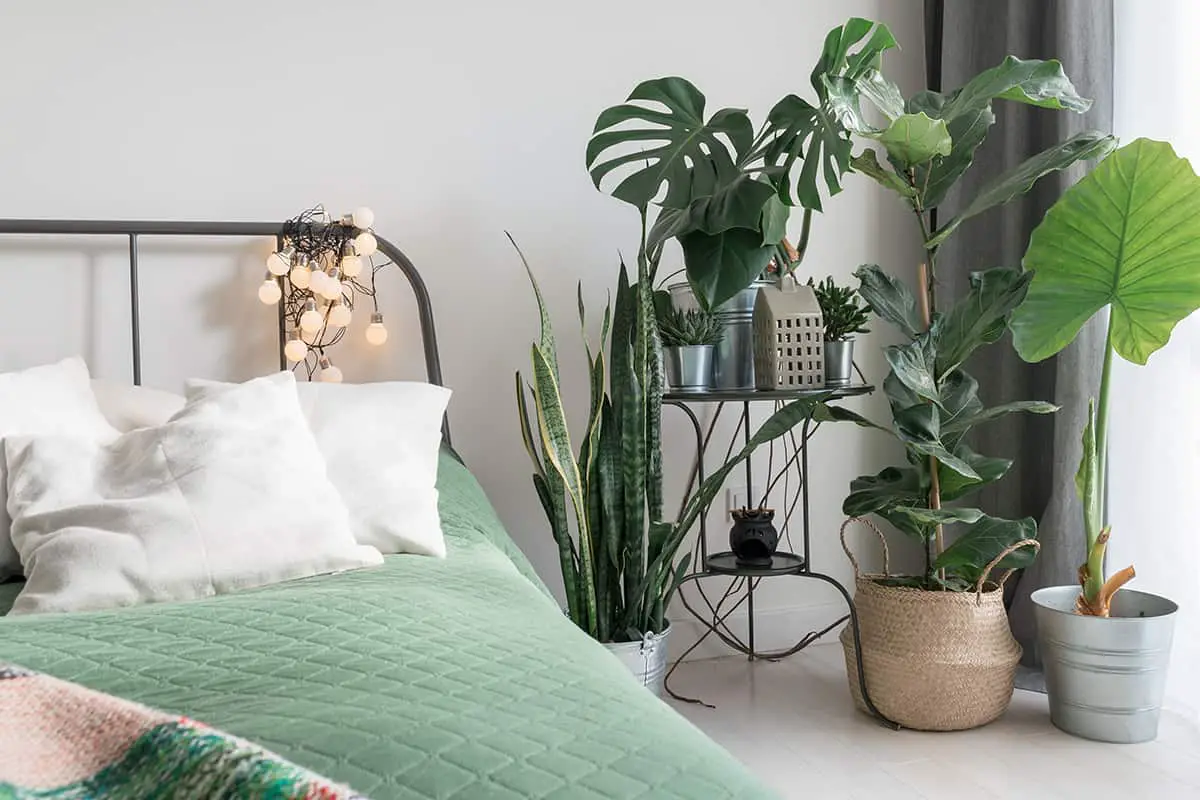Enhancing your bedroom with plants can create a peaceful and restorative space. They not only bring a touch of nature indoors but also have benefits for air quality and mood. When choosing plants for your bedroom, consider those that are low-maintenance and thrive in indoor conditions.
Some plants have properties that can improve your sleep quality. For instance, lavender emits a scent known to encourage relaxation. Snake plants are another excellent choice as they release oxygen at night, which may help you breathe easier while you sleep. It’s crucial to pick plants that fit your bedroom’s environment, including light exposure and space.
In addition to health benefits, bedroom plants can also contribute to the room’s aesthetics. The right plants can complement your decor and add vibrant, living elements to your space. Whether you prefer large, leafy greens or small, succulent varieties, there’s a plant to suit your style and bedroom conditions. Remember to position them where they can receive appropriate light and aren’t in the way of daily activities.
Table of Contents
Snake Plant
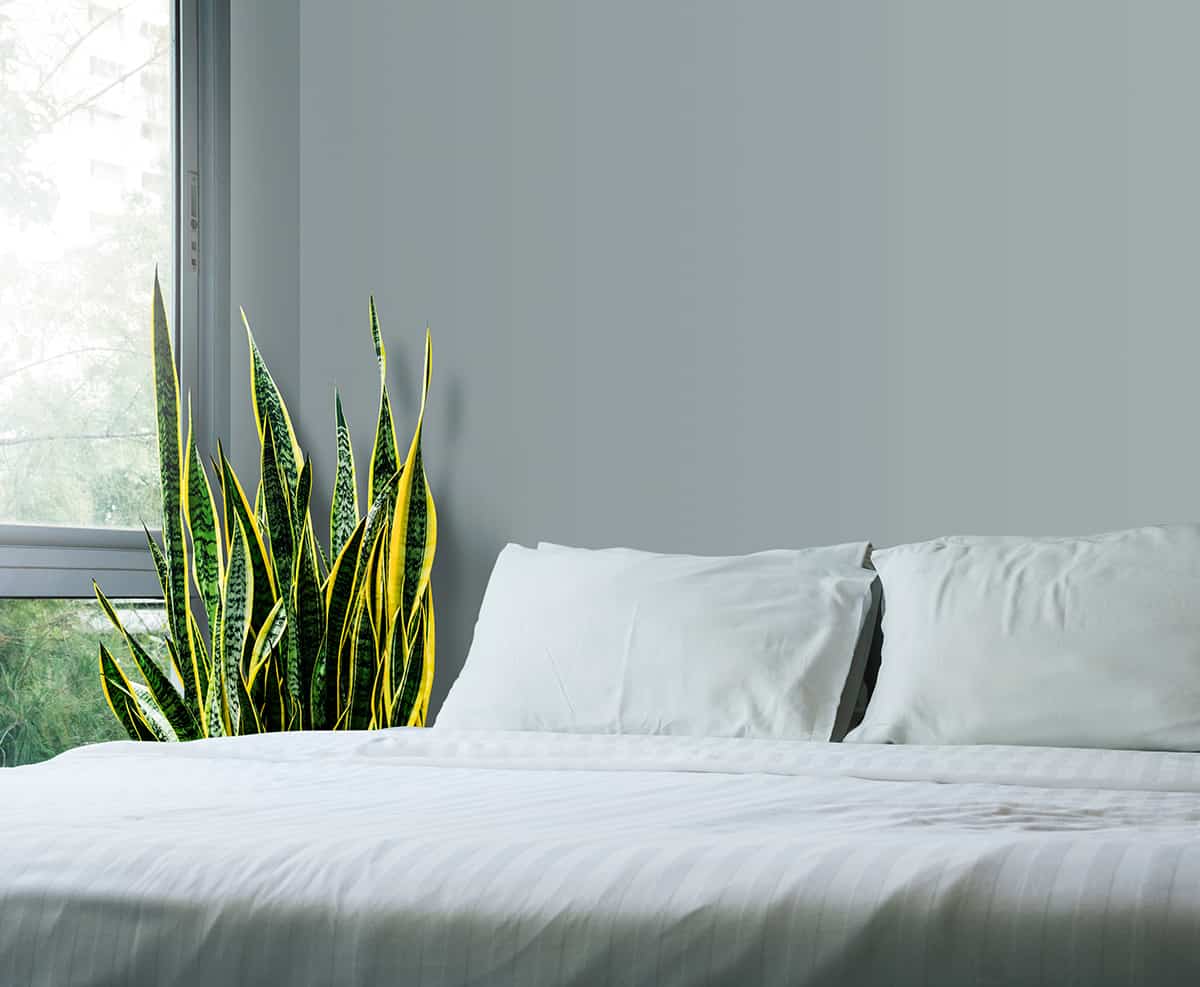
The Snake Plant, also recognized as Sansevieria, is celebrated for its stiff, upright leaves that often showcase green banding and a yellow border, adding an architectural element to bedroom decor. This plant thrives on minimal attention, requiring water only once every few weeks and preferring indirect light, although it can adapt well to low-light conditions.
Snake Plants are known for their ability to improve air quality by filtering out toxins, making them a beneficial addition to any indoor space. Their low maintenance requirements make them a suitable choice for busy or forgetful owners, while their unique shape contributes a modern aesthetic appeal to any setting.
However, it’s important to note that Snake Plants are toxic when ingested, so they should be kept out of reach of pets and children. Despite this, their resilience makes them an excellent option for enhancing the greenery in your bedroom, capable of withstanding occasional neglect.
Peace Lily
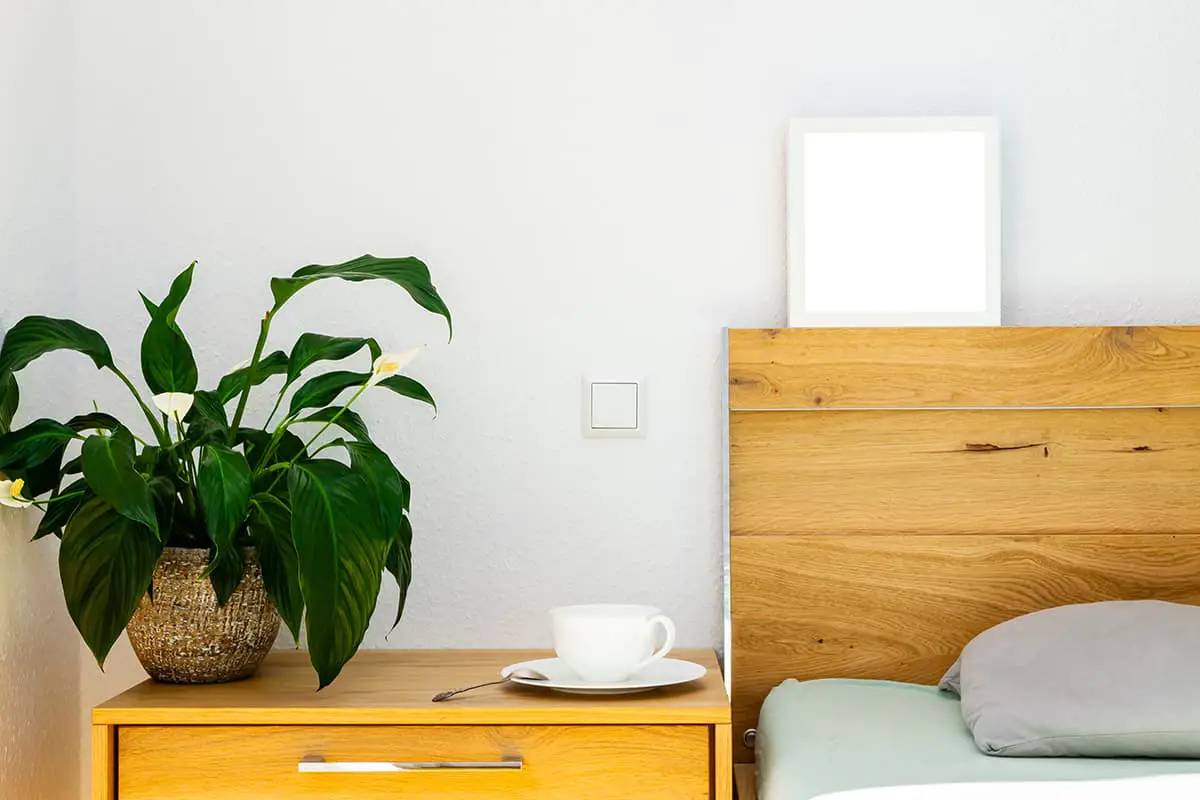
The Peace Lily, known scientifically as Spathiphyllum, stands out as a favored indoor plant characterized by its glossy green leaves and elegant white flowers. It is well-suited for environments with low to medium light and is celebrated for its air-purifying properties.
One of the Peace Lily’s forgiving traits is its ability to signal when it needs water; its leaves will droop to indicate thirst. Incorporating this plant into your bedroom decor not only adds beauty but also increases humidity by up to 5%, which can enhance your breathing quality during sleep.
Spider Plant
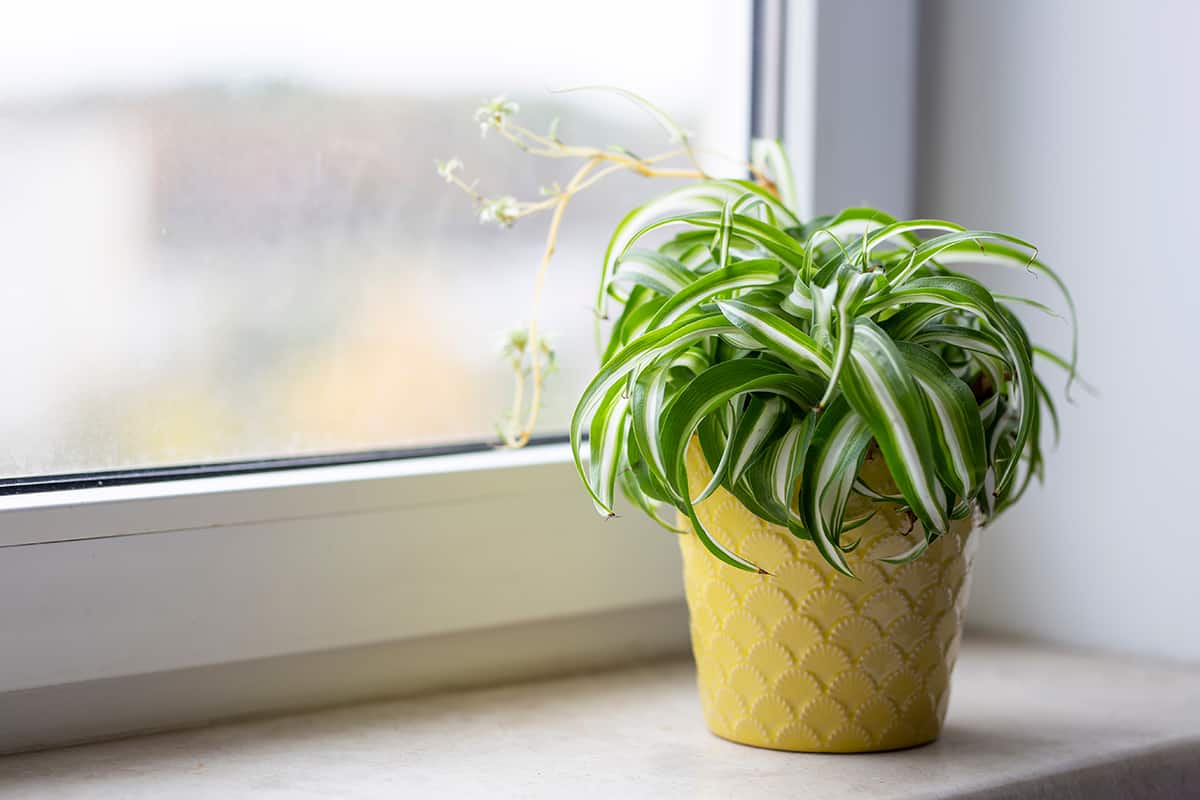
The Spider Plant, a favored choice for bedroom greenery, is celebrated for its straightforward care requirements and its ability to purify the air. For the plant to thrive, it should be placed in an area where it can receive bright, indirect light, though it’s also capable of adapting to lower light conditions.
In terms of care, the Spider Plant has specific needs. The soil should be allowed to dry out to about an inch deep between waterings. It’s best to keep the room at a comfortable temperature, ideally between 60-80°F (15-27°C), and the plant does well in the average humidity found in most homes.
The benefits of having a Spider Plant in your bedroom are notable. It excels at removing common household toxins from the air, making it an excellent choice for improving indoor air quality. Additionally, it is non-toxic, making it safe for homes with pets and children.
Aloe Vera
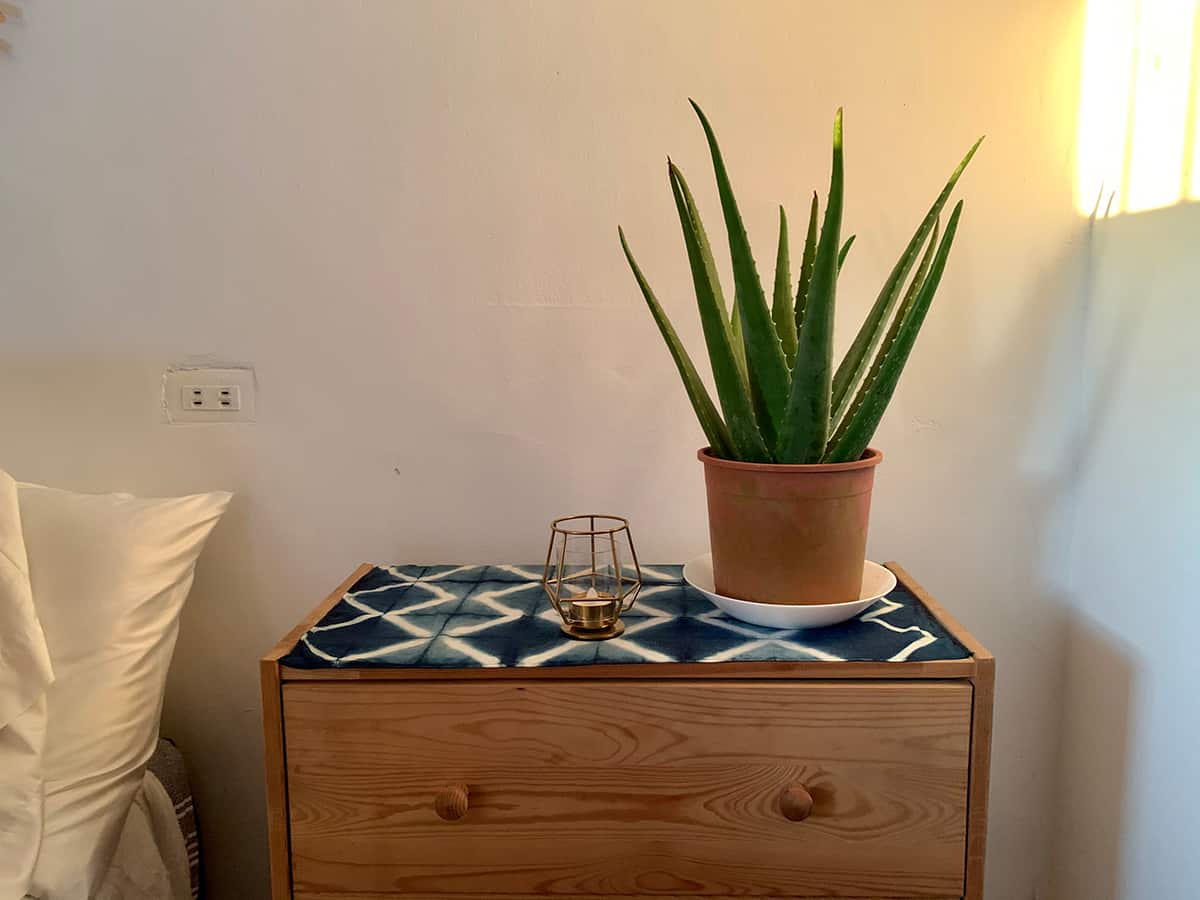
Aloe vera makes for an ideal plant in your bedroom due to its easy growth in pots and minimal care requirements. It thrives in bright, sunny spots and should be watered sparingly to prevent root rot.
Beyond its appealing succulent appearance, aloe vera is celebrated for its air-purifying properties. It effectively removes common indoor air pollutants, creating a cleaner and fresher environment in your bedroom.
The care routine for aloe vera is straightforward. The pot should have drainage holes to prevent water from accumulating, and the soil should be allowed to dry out between waterings. Aloe vera flourishes in temperatures ranging from 60-75°F (15-24°C).
Aloe vera is not just beneficial for its air-purifying capabilities; it also houses a soothing gel within its leaves that can aid in healing minor cuts and burns. Additionally, it purifies the air by eliminating toxins such as formaldehyde.
English Ivy
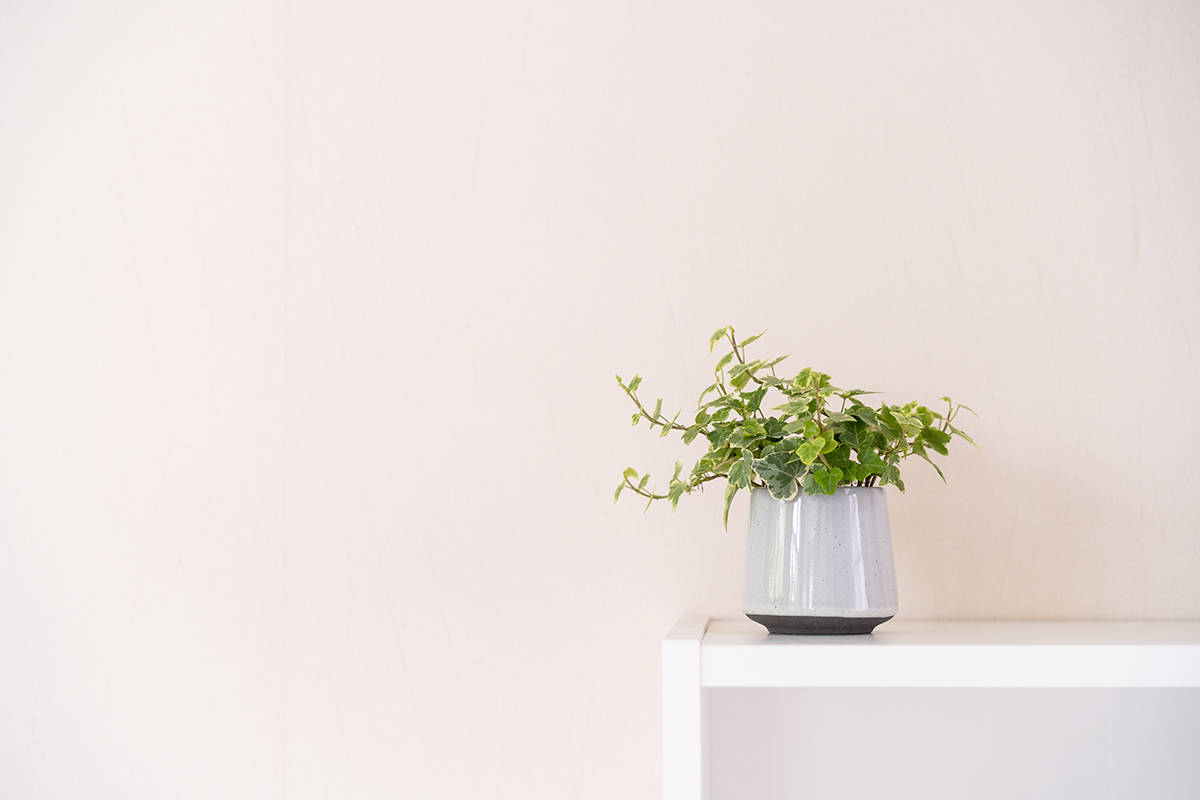
English Ivy, or Hedera helix, is a favored indoor plant known for thriving in moderate temperatures and medium to low light conditions, making it an ideal addition to bedroom environments. It is important to keep the soil moist, yet be cautious not to overwater to avoid root rot.
This plant is celebrated for its air-purifying qualities, capable of absorbing harmful toxins such as formaldehyde, benzene, and xylene from the air. Having English Ivy in your bedroom might enhance the environment, contributing to better sleep and overall wellbeing.
Caring for English Ivy involves simple steps: using a pot that facilitates drainage and applying a liquid fertilizer every few weeks during the growing months. However, it’s crucial to keep the plant out of reach of pets, as it is toxic if ingested, ensuring both the safety of your pets and the health of your plant.
Lavender
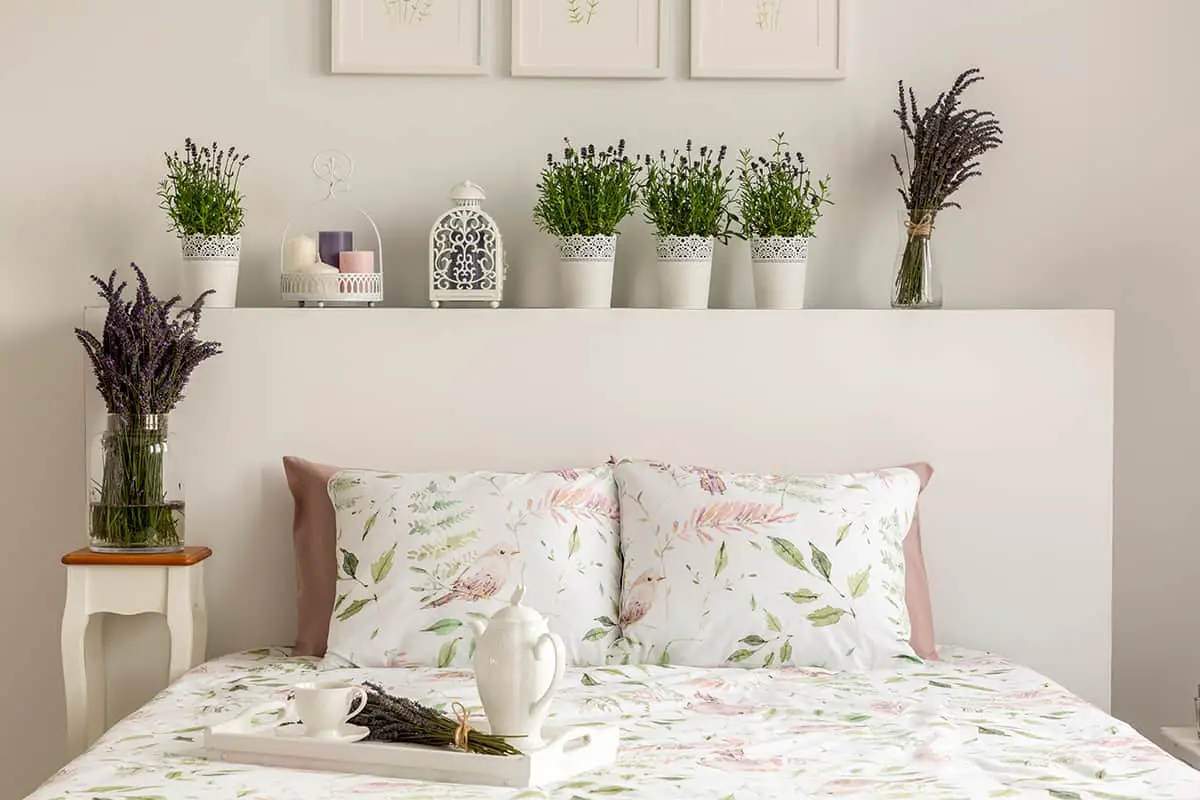
Lavender, renowned for its soothing fragrance, is believed to enhance sleep quality. It is best positioned on a windowsill or table where it receives indirect sunlight, with watering recommended once or twice a week.
The calming scent of lavender contributes to stress and anxiety reduction, while its properties are known to improve air quality. Additionally, the natural fragrance of lavender may serve as a sleep aid, potentially leading to better sleep.
Rubber Plant
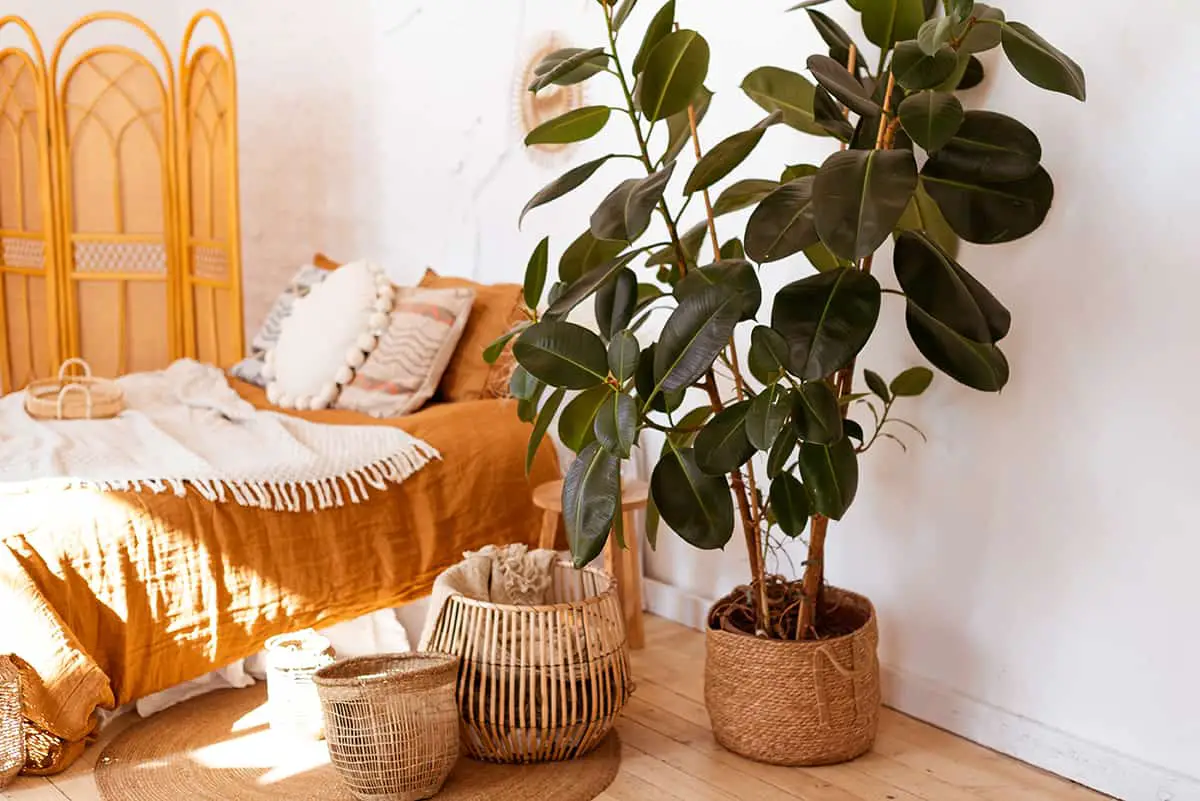
Rubber plants, with their glossy leaves, offer a striking aesthetic to any bedroom, alongside their air-purifying qualities. It’s important for the care of your rubber plant to ensure it receives medium to bright, indirect light, as direct sunlight can damage the leaves.
Watering should be done in a way that allows the soil to dry out between sessions, a method that helps prevent root rot and maintains plant health. Additionally, wiping the leaves regularly will not only maintain their shine but also remove dust, keeping your plant looking its best.
Regular pruning is recommended to control the size of your rubber plant and to promote a bushy growth pattern, ensuring your plant remains a beautiful addition to your bedroom.
Boston Fern

Boston Ferns, known scientifically as Nephrolepis exaltata, are favored as indoor plants due to their love for humid conditions and indirect light, making your bedroom an ideal environment, provided it’s not overly dry.
For their care, Boston Ferns require indirect light, high humidity, consistent watering, and a temperature range between 60-75°F (15-24°C). It’s important to keep the soil consistently moist while being careful not to overwater to avoid root rot. Employing a pot with drainage holes can help prevent excess water buildup. They are also non-toxic to pets, allowing for worry-free placement in homes with furry friends.
Philodendron
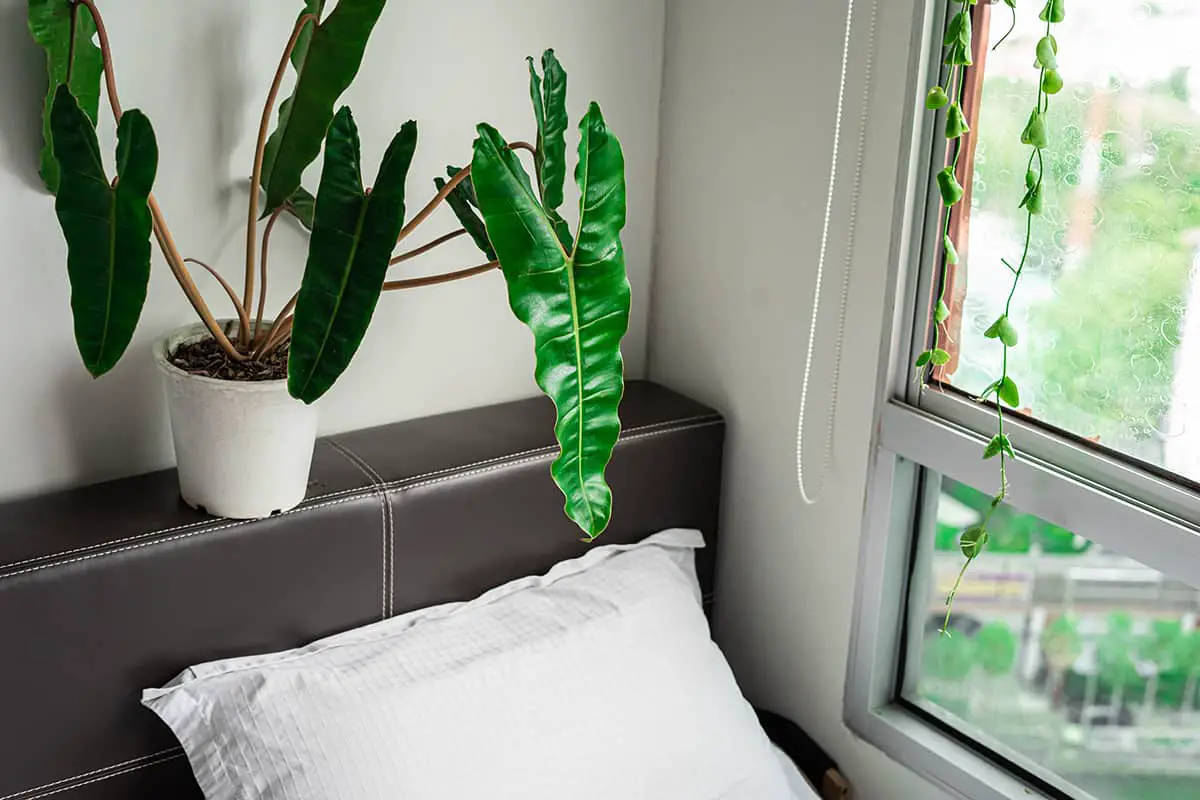
Your bedroom can serve as the ideal environment for a Philodendron, a plant that flourishes in low-light conditions and demands minimal care. Known for their lush, green leaves, Philodendrons bring a natural touch to any space.
There are many varieties of Philodendrons, such as the Heartleaf Philodendron and Philodendron Brasil, each with its unique leaf shape and color pattern. You can select a variety that best fits your aesthetic preferences.
Philodendrons are also celebrated for their air-purifying qualities, capable of filtering air pollutants and making them a beneficial addition to your bedroom.
Pothos
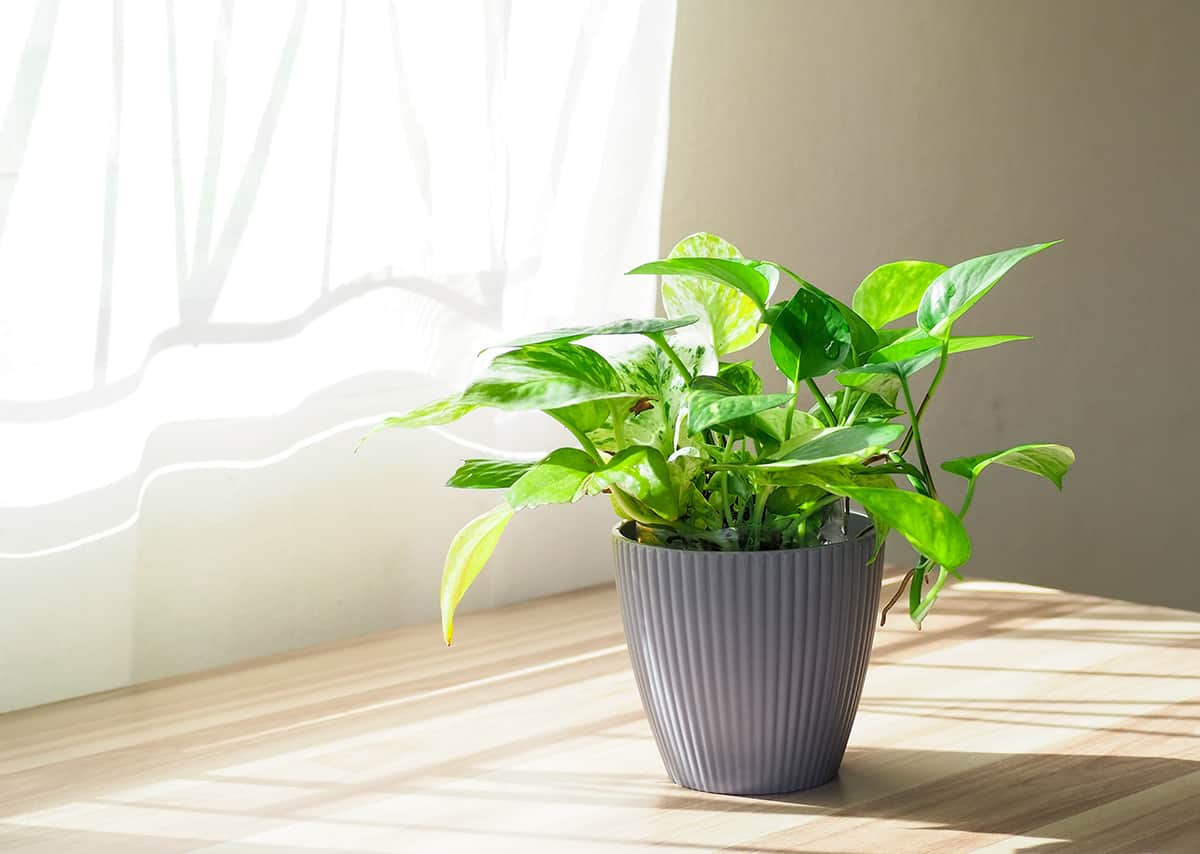
Pothos, or Epipremnum aureum, is a favored houseplant celebrated for its heart-shaped leaves and trailing vines, available in various colors and patterns. This plant thrives in low to medium light, making it a suitable addition to bedrooms where sunlight is indirect. It also adapts well to fluorescent lighting, offering flexibility in placement within your home.
One of the key benefits of Pothos is its ability to purify the air by removing toxins such as formaldehyde and benzene, making it not only a decorative but also a functional addition to any room.
It’s important to note that all parts of the plant are toxic if ingested, so keep it out of reach of pets and children.
ZZ Plant
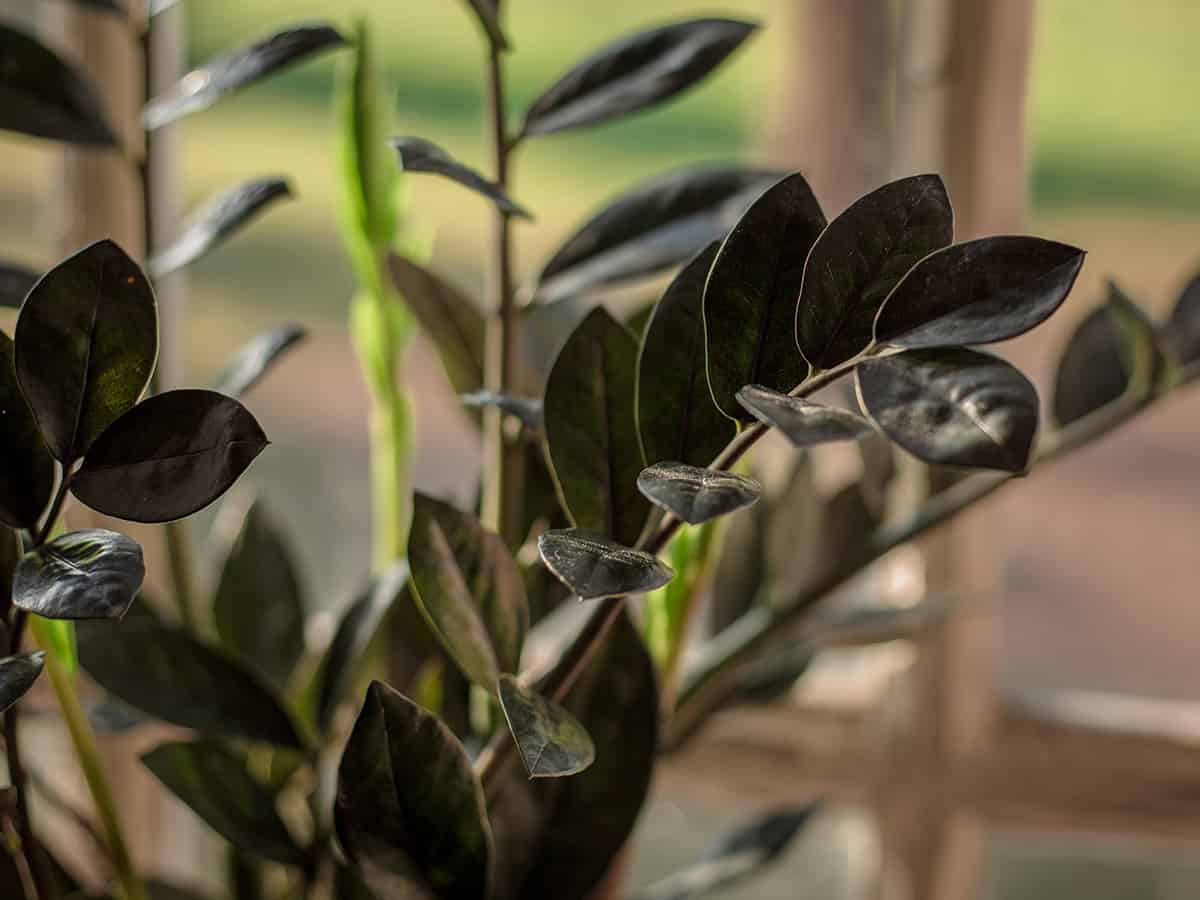
The ZZ plant, or Zamioculcas zamiifolia, presents a sturdy option for adding a touch of elegance to your bedroom with its waxy, dark green leaves.
This plant is celebrated for its ease of maintenance, requiring minimal attention from the caregiver, and, more importantly, its air-purifying capabilities. It is capable of removing toxins from the environment. Additionally, its glossy leaves can enhance any bedroom decor, providing both beauty and functional benefits.
However, it’s crucial to handle the ZZ plant with care, as all parts of the plant are poisonous if ingested.
Orchid
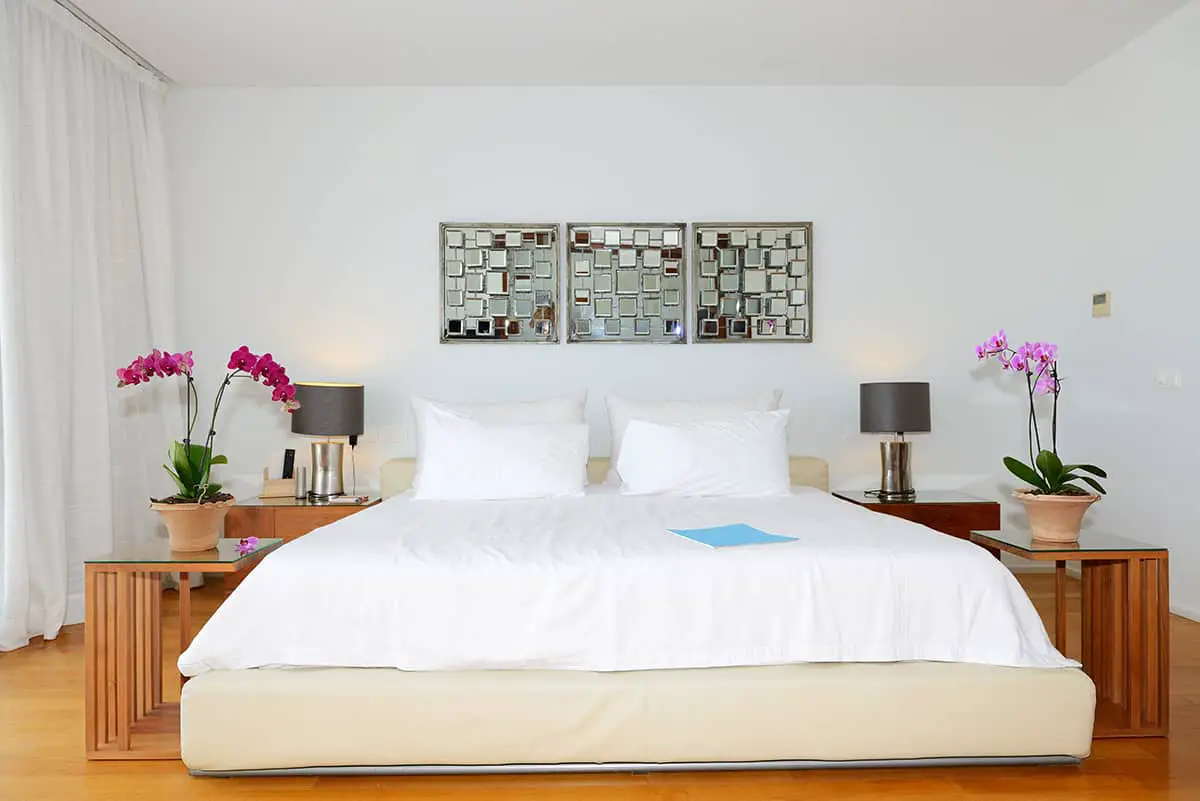
Orchids, known for their vibrant blooms and distinctive architectural shape, have the power to enhance the atmosphere of your bedroom. These flowers add a touch of elegance and convey a sense of calmness, offering a variety of species each with its unique care requirements.
Orchids flourish in moderate light conditions, making the sill of your bedroom window often the ideal spot. It’s crucial to provide them with indirect sunlight to avoid leaf burn.
When it comes to watering, it’s best to water your orchids sparingly, allowing the soil to dry out between waterings to prevent over-watering and the potential for root rot.
Jasmine
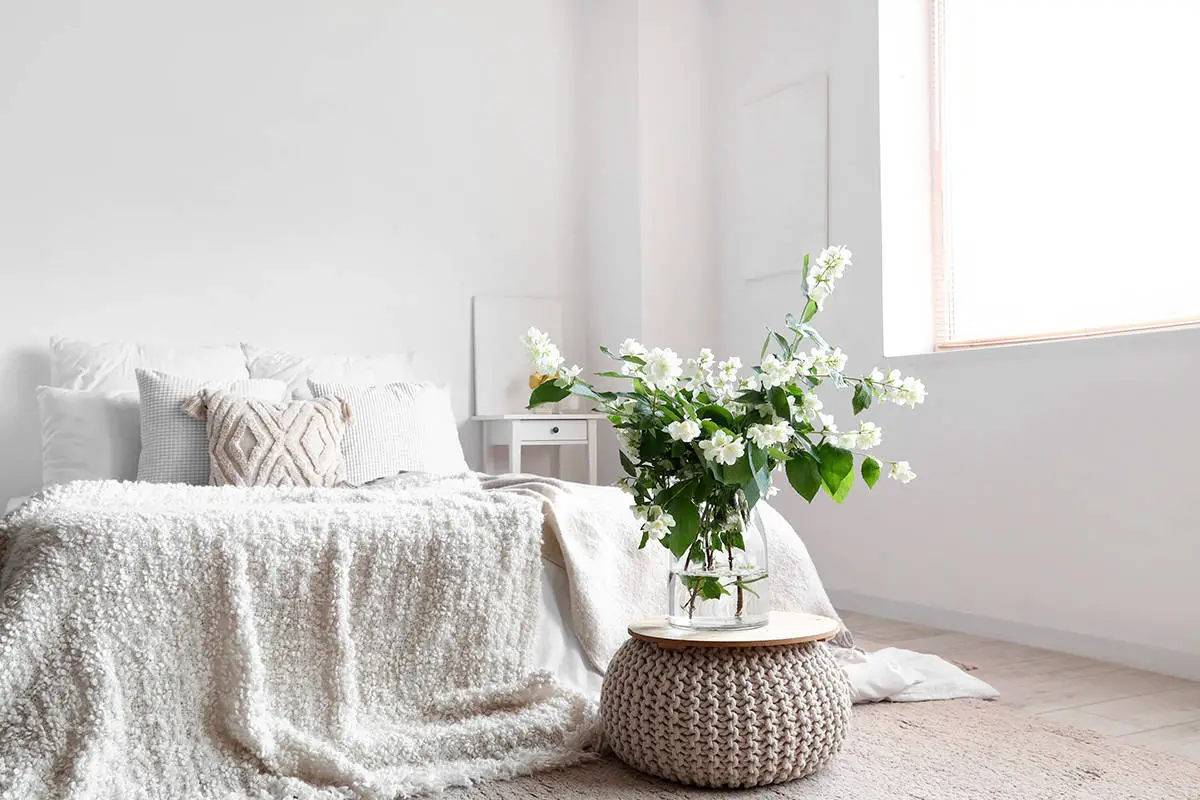
Jasmine plants are known for their sweet fragrance. Their small, star-shaped flowers can improve your mood. You can place a jasmine plant on a windowsill. They prefer bright, indirect light.
Jasmine needs moderate watering. Ensure the soil stays slightly moist. Too much water can harm the plant. Allow the top inch of soil to dry out between waterings.
Some jasmine varieties are easy to care for. Jasminum polyanthum is a good bedroom choice. It needs less maintenance. Be mindful of their growth rate. Trim regularly to manage their size.
Care for your jasmine and it may bloom indoors. The right conditions will promote flowering. Enjoy the sweet scent at night. It can aid your sleep.
Areca Palm
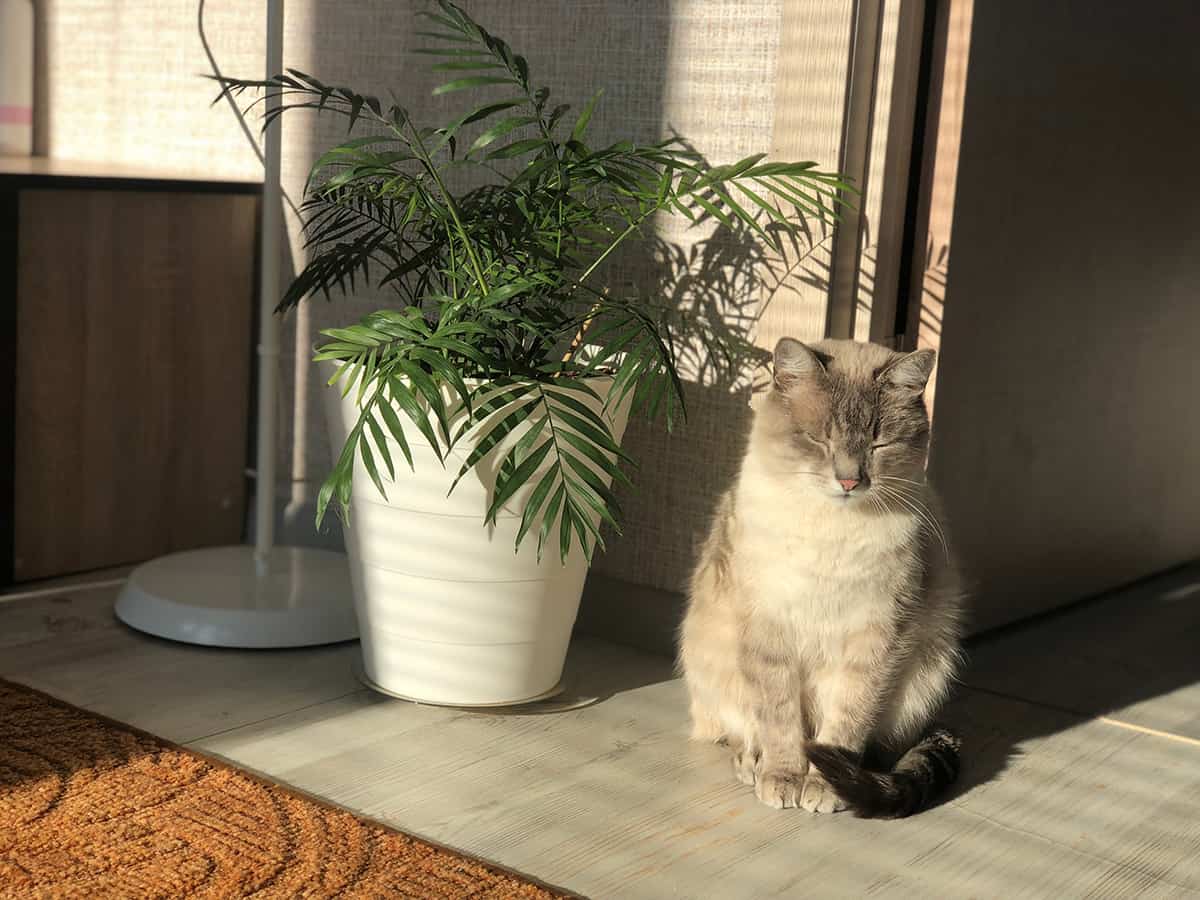
The Areca Palm, or Dypsis lutescens, stands out as a favored indoor plant known for its lush, feather-shaped fronds that can add a tropical touch to your bedroom environment. This plant is appreciated for its ability to enhance the aesthetics of any space it occupies.
One of the notable benefits of the Areca Palm is its ability to purify the air, making it an excellent addition to any room looking to improve air quality. Additionally, it contributes to increasing humidity levels in its surroundings, which can be particularly beneficial for individuals with respiratory issues.
However, it’s important to consider the space the Areca Palm may need as it grows.
Fiddle Leaf Fig
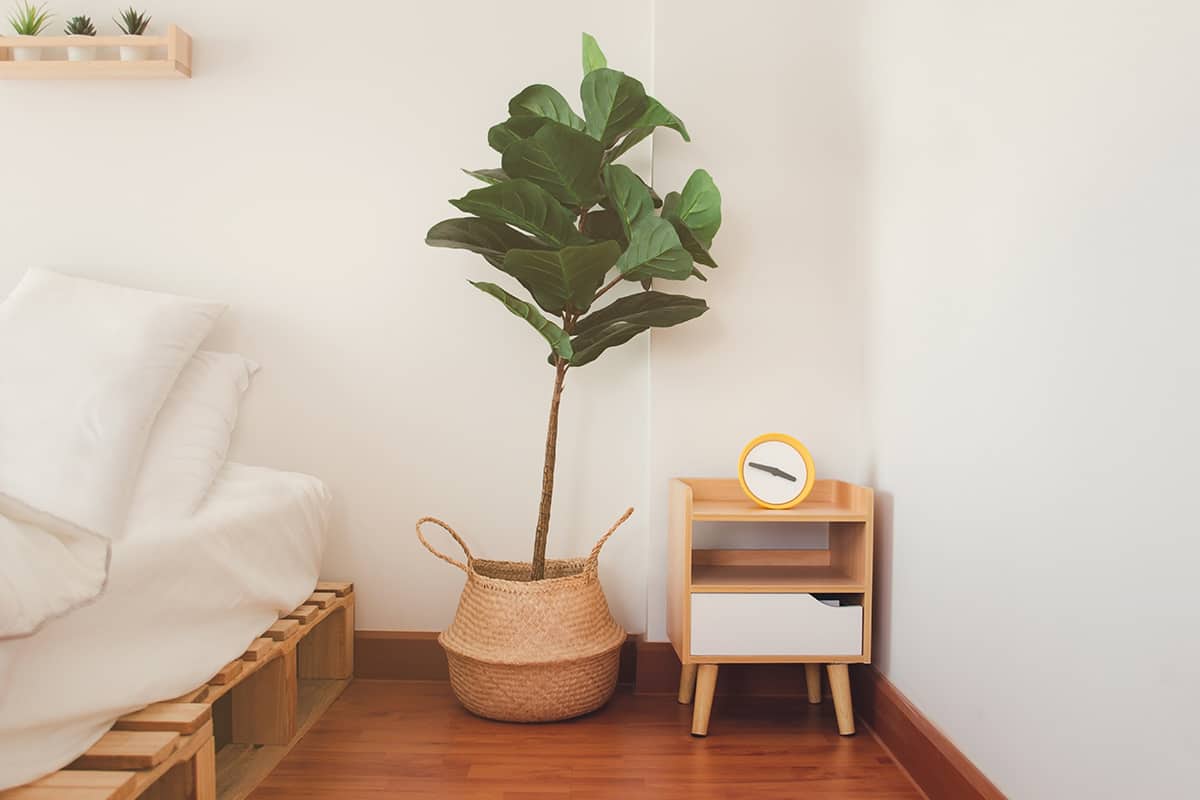
The Fiddle Leaf Fig, a favored indoor plant, is celebrated for its large, leathery leaves that mirror the shape of a violin, giving it its distinctive name. For optimal growth in your bedroom, this plant requires bright, indirect light. It is best placed near a window where it can bask in the gentle rays of the morning or afternoon sun.
As Fiddle Leaf Figs grow tall and upright, supporting them with a stake as they mature can be beneficial. Rotating the pot every few months encourages even growth by exposing all sides of the plant to light equally. Pruning is useful for managing the size and shape of your plant.
If you observe brown spots or dropping leaves, it’s a sign to reassess your care routine, as your plant may require more light or less water. With the proper care, the Fiddle Leaf Fig can become a stunning addition to your bedroom, enhancing its ambiance with its unique beauty.
